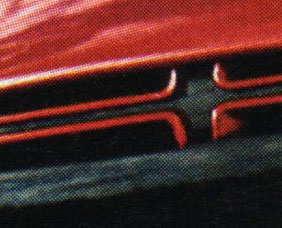The cell phone has replaced the point-and-shoot camera.
If you have an older phone, its camera is probably not very good, but if you’ve bought a recent smart phone, you now know how good a cell phone’s camera can be.
I’ve always been a proponent of small digital cameras. (My second, in about 2002, was a tiny Sony that was incredibly simple to use. I still love Sony cameras – my current non-cell-phone camera is a Sony.) The easier a camera is to use, the more often you’ll take photos. And if it’s small and light enough, you will carry it in your pocket, thus increasing your chances of not missing a shot.
Software is the biggest reason why smartphone cameras rule photography today. I took the photos below with my iPhone 4S and used the Dynamic Light app to add effects. B is way over the top, but the filters make the picture a lot more interesting. I applied filters with a little more care to create D. You might argue that C (the original) is better, but I like the more dramatic result of D.
And then there is the ability to share your photos. With a regular camera, it takes a lot of work to share a photo with your friends. With a smartphone app, it’s just a few clicks away. Creating art is great, but sharing art is even better.
In-phone photo apps are extremely easy to use. A professional using Photoshop would spend ten times the effort to gain a similar result. And yes, a “real” camera will give an amateur photographer better results, at least for the original. But again, the hassle of lugging around a huge camera will cause many lost shots – and memories of life events.
Another photo app I enjoy is Camera Awesome, if only because of the fun messages is provides while the image is processing. “Carmelizing kraken tenacles.”
Go forth and have fun with a smart phone, if you are able.









 A store in our neighborhood closed. I was really sad. Though I was not a big patron of Jo-Ann Fabrics, it will be missed. I don’t know of any new tenant taking over the space, which was a Safeway supermarket many years ago.
A store in our neighborhood closed. I was really sad. Though I was not a big patron of Jo-Ann Fabrics, it will be missed. I don’t know of any new tenant taking over the space, which was a Safeway supermarket many years ago.
 Traffic is part of life in many large cities around the world. The traffic in the busiest of USA cities is nothing compared to the grid-lock that affects many urban centers, particularly in the “developing world.”
Traffic is part of life in many large cities around the world. The traffic in the busiest of USA cities is nothing compared to the grid-lock that affects many urban centers, particularly in the “developing world.” Back in the 1970s, air pollution was really bad. The average car back then put out literally 20 times the amount of harmful emissions than today’s average car. If the government had not stepped in and made laws that forced car manufacturers to clean up what was coming out of tailpipes, I am sure we’d have dirtier air today.
Back in the 1970s, air pollution was really bad. The average car back then put out literally 20 times the amount of harmful emissions than today’s average car. If the government had not stepped in and made laws that forced car manufacturers to clean up what was coming out of tailpipes, I am sure we’d have dirtier air today.
 So there’s a boxer. His name is Floyd Mayweather, Jr. He has two identical sets of cars – a white set in Las Vegas and a black set in Miami. Each set includes a Bentley, a Mercedes Benz SLS AMG, a Ferrari and an unknown fourth car. My guess on the total value (and there may be more than four cars) is about $2 million. Somehow it’s not the money spent that bothers me. It’s the identical-but-different-color aspect.
So there’s a boxer. His name is Floyd Mayweather, Jr. He has two identical sets of cars – a white set in Las Vegas and a black set in Miami. Each set includes a Bentley, a Mercedes Benz SLS AMG, a Ferrari and an unknown fourth car. My guess on the total value (and there may be more than four cars) is about $2 million. Somehow it’s not the money spent that bothers me. It’s the identical-but-different-color aspect.